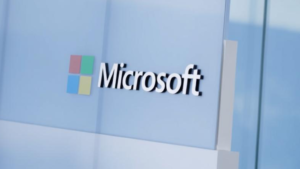
Canada Appeals for International Firefighting Aid
June 09, 2025: Canada has issued an international appeal for firefighting support as wildfires intensify across multiple provinces

May 11, 2021: -Elon Musk’s SpaceX is all set to launch the “DOGE-1 Mission to the Moon” in the first quarter of 2022, with the company accepts the meme-inspired cryptocurrency as full payment for the lunar payload. On Sunday, geometric Energy Corporation announced the dogecoin-funded mission, which SpaceX’s communications team confirmed in an email to reporters. The mission’s financial value was not disclosed.
DOGE-1 will fly a 40-kilogram cube satellite as a payload on a Falcon 9 rocket, with Geometric Energy Corporation saying its cargo “will obtain lunar-spatial intelligence and cameras on-board with integrated communications and computational systems.”
Vice president of SpaceX of commercial sales Tom Ochinero said that DOGE-1 “can demonstrate the application of cryptocurrency beyond Earth orbit and set the foundation for interplanetary commerce.”
“We’re excited to launch DOGE-1 to the Moon!” Ochinero said. The company’s plans were announced, albeit tweeted on April 1. “SpaceX is going to put a literal Dogecoin on the literal moon,” Musk wrote.
The DOGE-1 mission comes after Musk, the self-proclaimed “Dogefather,” made his debut as host of “Saturday Night Live.”
The price of Dogecoin plunged during his appearance, falling below 50 cents, despite his references to the cryptocurrency.
For SpaceX, the announcement also comes when the company set a new record for its Falcon 9 series of rockets. After launching another batch of Starlink satellites into orbit, SpaceX landed the Falcon 9 rocket’s booster for the 10th time. A benchmark Musk has previously described as key in the company’s progress of reusing its rockets.
“It’s designed to do ten or more flights with no refurbishment between each flight,” Musk told reporters in May 2018.
“We believe that the [Falcon 9] boosters are capable of on the order of at least 100 flights before being retired. Maybe more.”
We provide the insights on leaders who are responsible for taking their organization to new heights, all the while bringing together a group of talented individuals.

June 09, 2025: Canada has issued an international appeal for firefighting support as wildfires intensify across multiple provinces

May 27, 2025: Air Canada Cuts Five U.S. Routes for Winter 2025–26, Part of Broader Cross-Border Retrenchment

May 26, 2025: Trump Freezes $2.2B in Federal Grants to Harvard Over DEI, Threatens Tax-Exempt Status.

May 14, 2025: Microsoft has announced plans to reduce its global workforce by approximately 3%, affecting roughly 10,000 employees across multiple departments.

May 13, 2025: The Trump administration is considering suspending the constitutional right of habeas corpus in a bid to accelerate mass deportations.

April 29, 2025: Donald Trump’s second term has reached the 100-day mark under sustained public skepticism, with national approval ratings